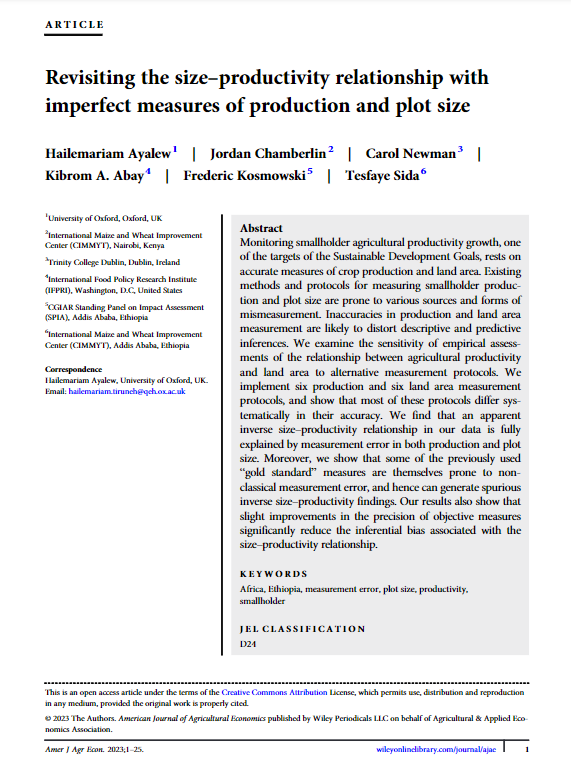Revisiting the size–productivity relationship with imperfect measures of production and plot size

Monitoring smallholder agricultural productivity growth, one of the targets of the Sustainable Development Goals, rests on accurate measures of crop production and land area. Existing methods and protocols for measuring smallholder production and plot size are prone to various sources and forms of mismeasurement. Inaccuracies in production and land area measurement are likely to distort descriptive and predictive inferences. We examine the sensitivity of empirical assessments of the relationship between agricultural productivity and land area to alternative measurement protocols. We implement six production and six land area measurement protocols, and show that most of these protocols differ systematically in their accuracy. We find that an apparent inverse size–productivity relationship in our data is fully explained by measurement error in both production and plot size. Moreover, we show that some of the previously used “gold standard” measures are themselves prone to nonclassical measurement error, and hence can generate spurious inverse size–productivity findings. Our results also show that slight improvements in the precision of objective measures significantly reduce the inferential bias associated with the size–productivity relationship.